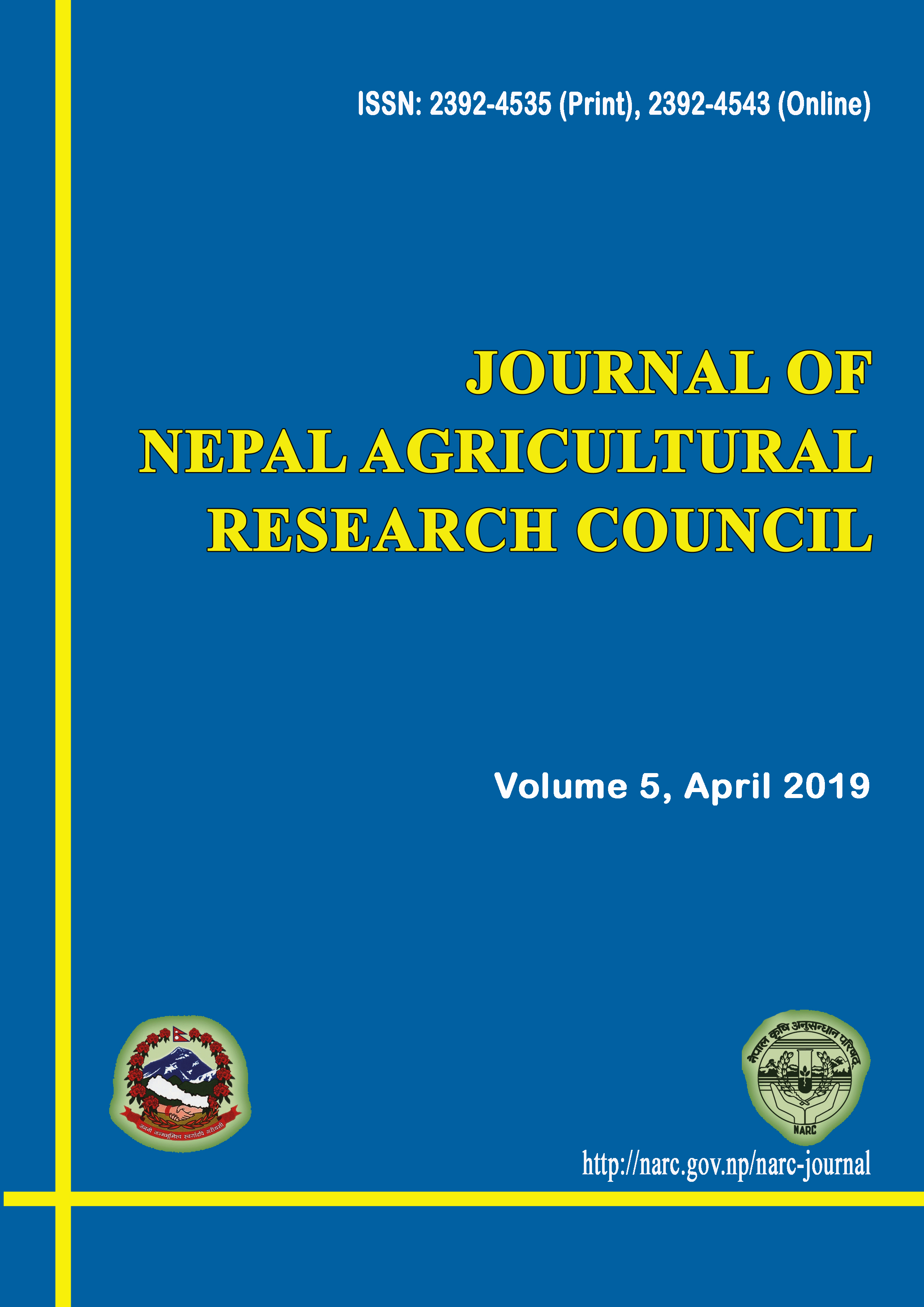Assessing Migration and Remittance Status and its Effect on Maize Production in Nepal
DOI:
https://doi.org/10.3126/jnarc.v5i1.23814Keywords:
Fallow land, Maize farming, Migration, RemittanceAbstract
Outmigration has been considered a major issue in agricultural production of Nepal. The study aimed to assess migration and remittance status and its effect on maize production. Altogether 682, both migrated and non-migrated households were selected using proportionate random sampling from six representative districts covering four provinces and all ecological domains of Nepal. Primary data were collected through households' survey and focus group discussion using structured and pretested interview schedule. The results showed that 26 percent of households have at least one member living abroad for a job opportunity. Most of the migration was male-centric and Chitwan district ranked first among study districts on migration status. About 43 percent of households received more than two hundred thousand annually as remittance and mostly they used that money in household consumption followed by education and loan repayment. Around 54 percent of households agreed that they were using remittances in maize farming mainly for purchasing chemical fertilizer and improved seed. The use of remittance income in mechanization such as buying/using of corn sheller and power tiller was comparatively very less. The results showed insignificant maize productivity but the fallow land holdings of the migrated household were significantly higher than non-migrating households. The issue of migration and fallow land holdings in maize has become an emerging concern to development worker and policy makers. Therefore, the introduction of efficient maize production system along with value addition program that linked with market targeting youth manpower is an urgent need for effective utilization of fallow land. Moreover, such opportunity also provides an avenue to the productive investment of remittance.
Downloads
Downloads
Published
How to Cite
Issue
Section
License
This license enables reusers to distribute, remix, adapt, and build upon the material in any medium or format for noncommercial purposes only, and only so long as attribution is given to the creator.




